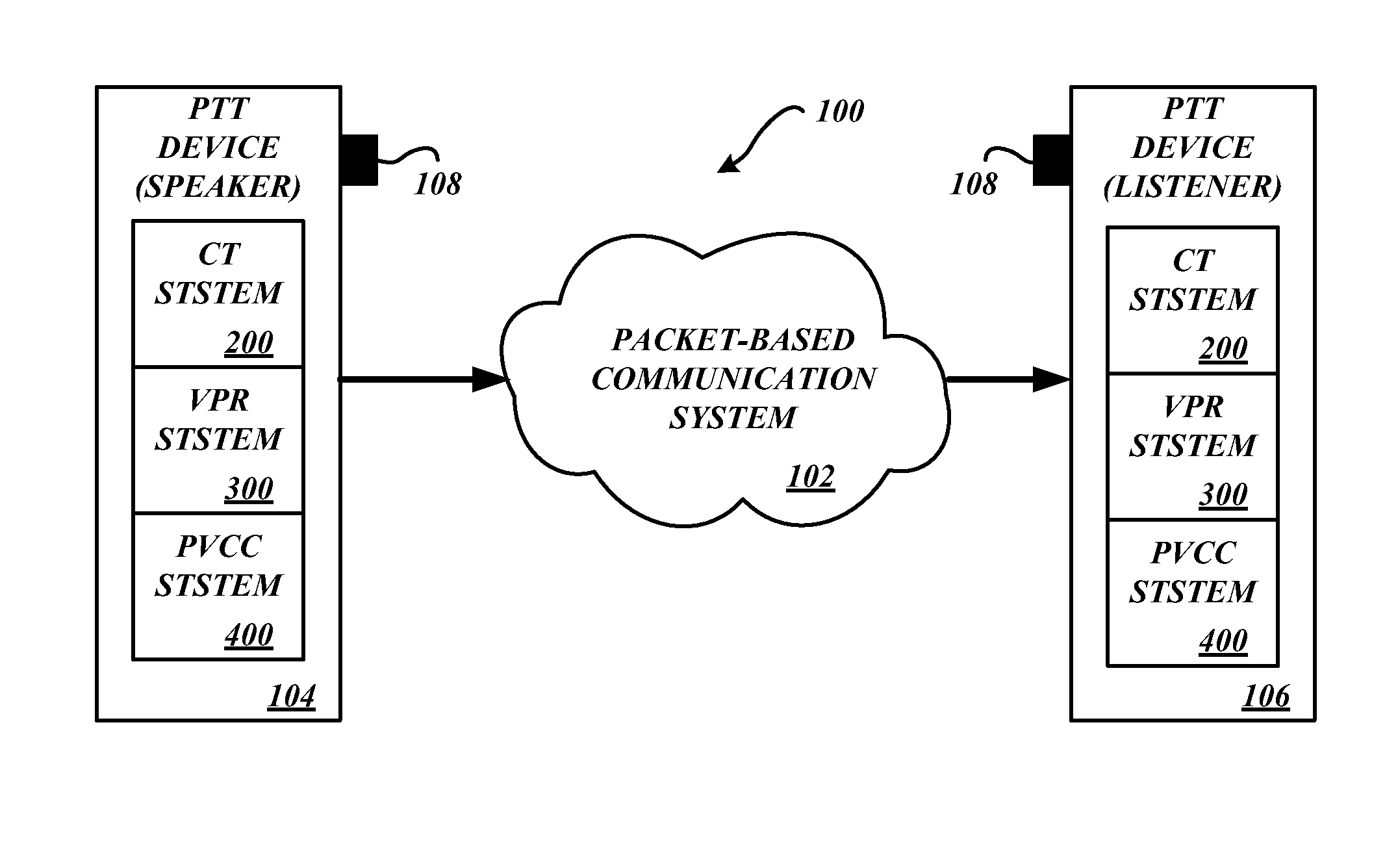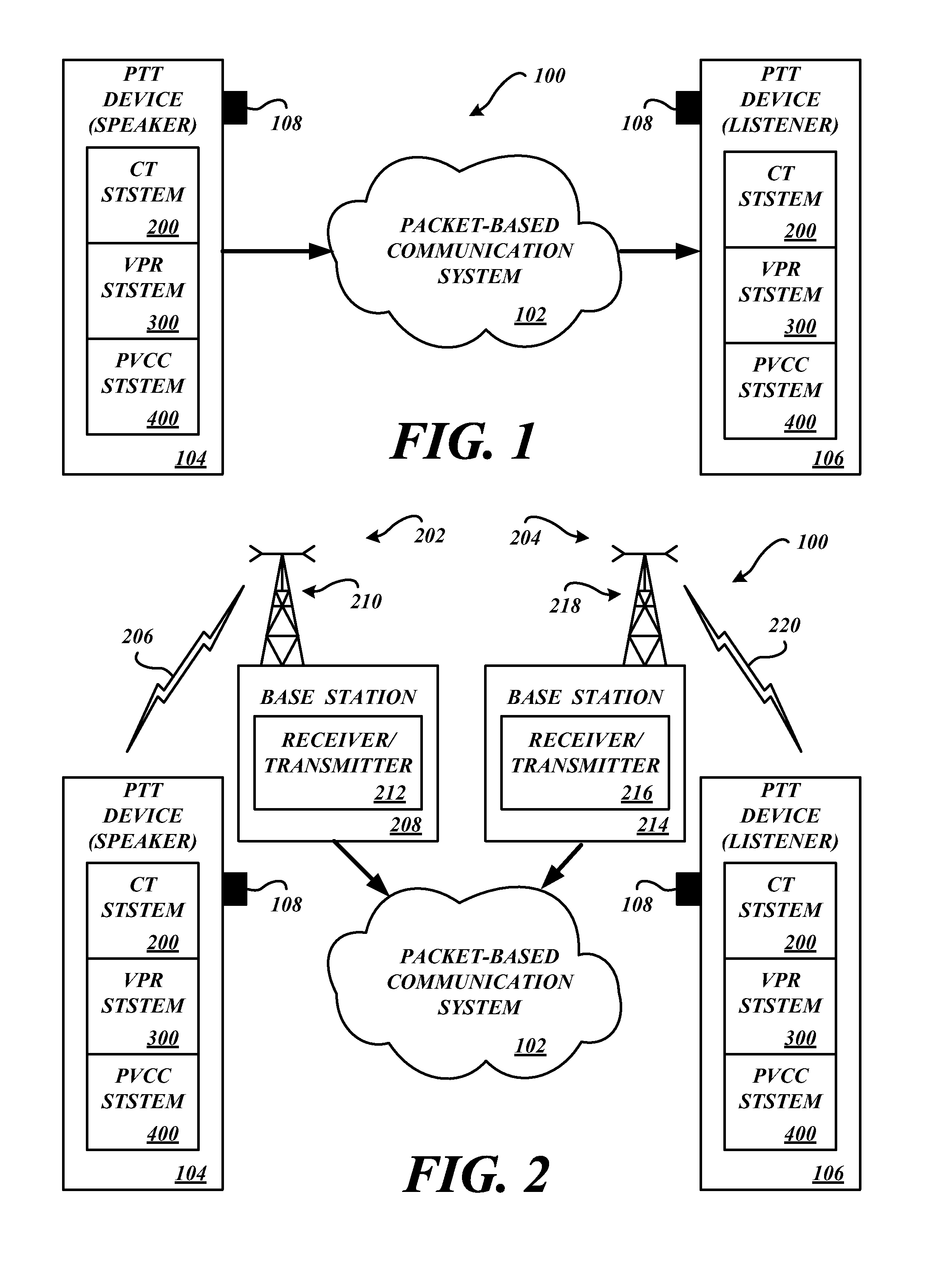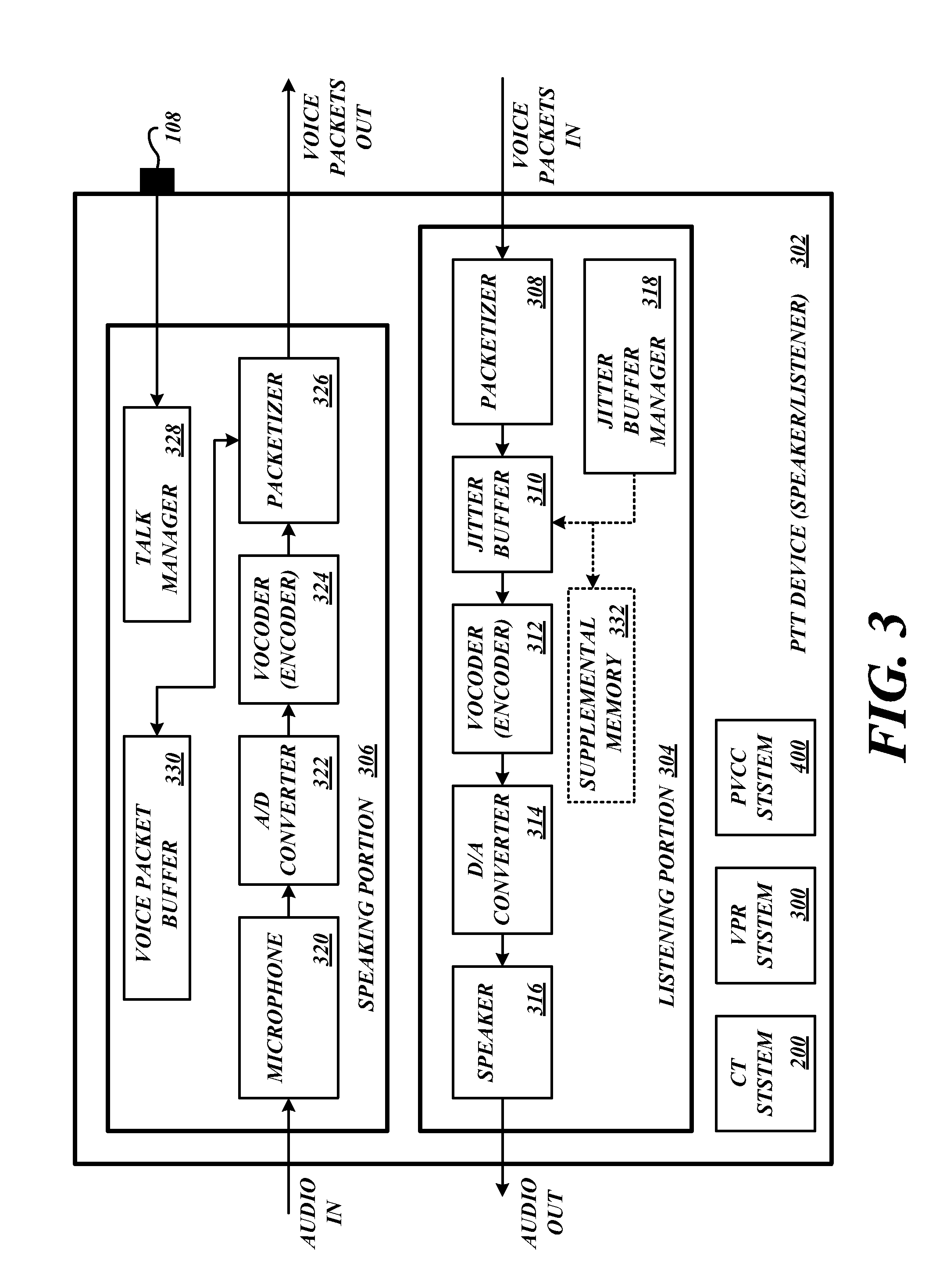Systems and methods for push-to-talk voice communication over voice over internet protocol networks
- Summary
- Abstract
- Description
- Claims
- Application Information
AI Technical Summary
Benefits of technology
Problems solved by technology
Method used
Image
Examples
Embodiment Construction
[0018]FIG. 1 is a block diagram of an embodiment of packet-based communication network compatible push-to-talk (PTT) communication system 100 (interchangeably referred to as a Press-to-Transmit system 100) that includes an embodiment of a comfort tone (CT) system 200, an embodiment of a voice packet recovery (VPR) system 300, and an embodiment of a perfect voice communication confirmation (PVCC) system 400. Various embodiments of the comfort tone system 200, the voice communications packet recovery system 300, and / or the perfect voice communication delivery confirmation system 400, cooperatively act together to provide a perfect voice communication that is heard by the listener, and is understood by the speaker to have been successfully communicated. A perfect voice communication is defined as a reliable, accurate, and timely voice communication when an intervening packet-based communication system 102 is employed to communicate voice communication packets between PTT devices 104 an...
PUM
 Login to View More
Login to View More Abstract
Description
Claims
Application Information
 Login to View More
Login to View More - R&D Engineer
- R&D Manager
- IP Professional
- Industry Leading Data Capabilities
- Powerful AI technology
- Patent DNA Extraction
Browse by: Latest US Patents, China's latest patents, Technical Efficacy Thesaurus, Application Domain, Technology Topic, Popular Technical Reports.
© 2024 PatSnap. All rights reserved.Legal|Privacy policy|Modern Slavery Act Transparency Statement|Sitemap|About US| Contact US: help@patsnap.com










